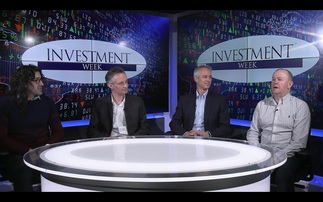By David Franklin is director in charge of retail funds at Christows It has been said that the ...
By David Franklin is director in charge of retail funds at Christows It has been said that the S&P 500 Index is in the process of forming the mother of all head and shoulders patterns. The first shoulder was formed in 1998 to 1999 by the index rising from 980 to 1,190 and falling back again to 980. Over the past year, a similar pattern has emerged, with the index once again rising from 980 to 1,180 before falling back again. These two periods represent the shoulders. In the middle is the head, the speculative bubble of 1999 to 2000 and subsequent collapse. Techni...
To continue reading this article...
Join Investment Week for free
- Unlimited access to real-time news, analysis and opinion from the investment industry, including the Sustainable Hub covering fund news from the ESG space
- Get ahead of regulatory and technological changes affecting fund management
- Important and breaking news stories selected by the editors delivered straight to your inbox each day
- Weekly members-only newsletter with exclusive opinion pieces from leading industry experts
- Be the first to hear about our extensive events schedule and awards programmes







